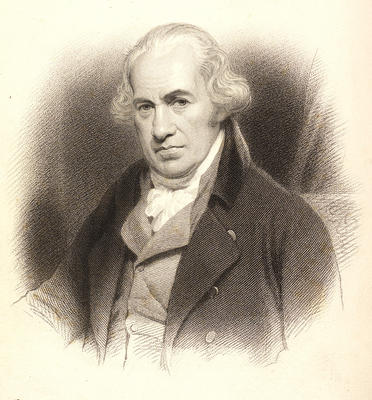
An engraved portrait of the engineer and instrument maker James Watt (1736-1819).
Greenock-born Watt came to Glasgow in 1757 to work as an instrument-maker. The University of Glasgow employed him and gave him lodgings and a workshop there, and in 1763 the Professor of Natural Philosophy John Anderson presented him with a Newcomen steam engine in need of repair. Watt's mind turned to ways of improving the engine and in 1765, famously while strolling on Glasgow Green, he devised a separate condenser which would improve efficiency and permit enormous savings in fuel.
Watt spent the following years developing his invention and working as a consultant civil engineer in Scotland , before moving to Birmingham in 1774 to form a partnership with the industrialist Matthew Boulton (1728-1809) at his Soho Foundry. Their improved steam engines revolutionised the mining, iron, transport and manufacturing industries and Watt is considered to be one of the key figures of the Industrial Revolution.
Reference: Sp Coll q43
Glasgow University Library, Special Collections
Keywords:
Boulton & Watt, Caledonian Canal, civil engineers, Forth and Clyde Canal, Glasgow Green, inventors, mechanical engineering, mechanical engineers, mechanics, Newcomen engines, portraits, scientific instrument makers, steam engines, University of Glasgow
You have 2 images in your photo album.